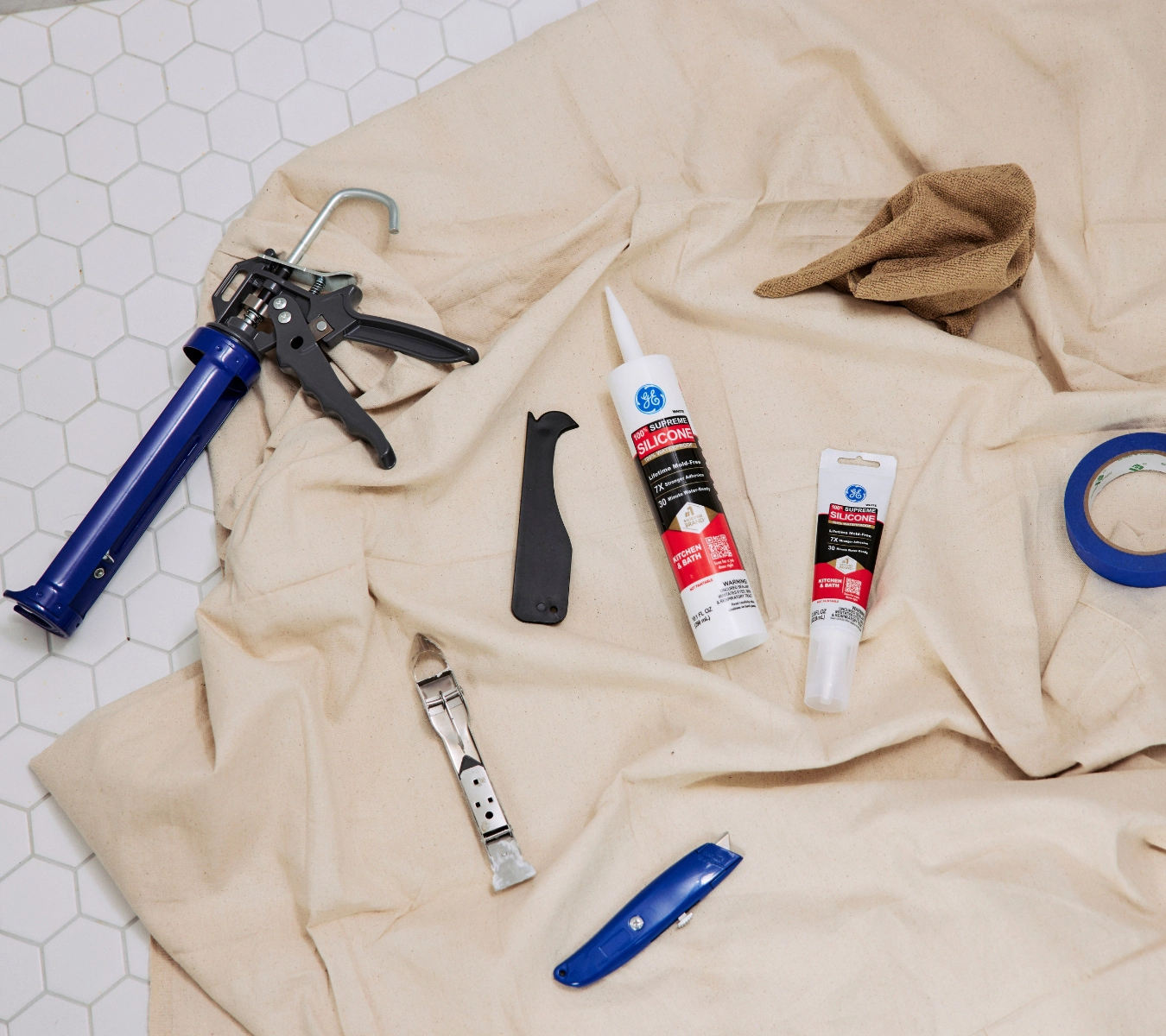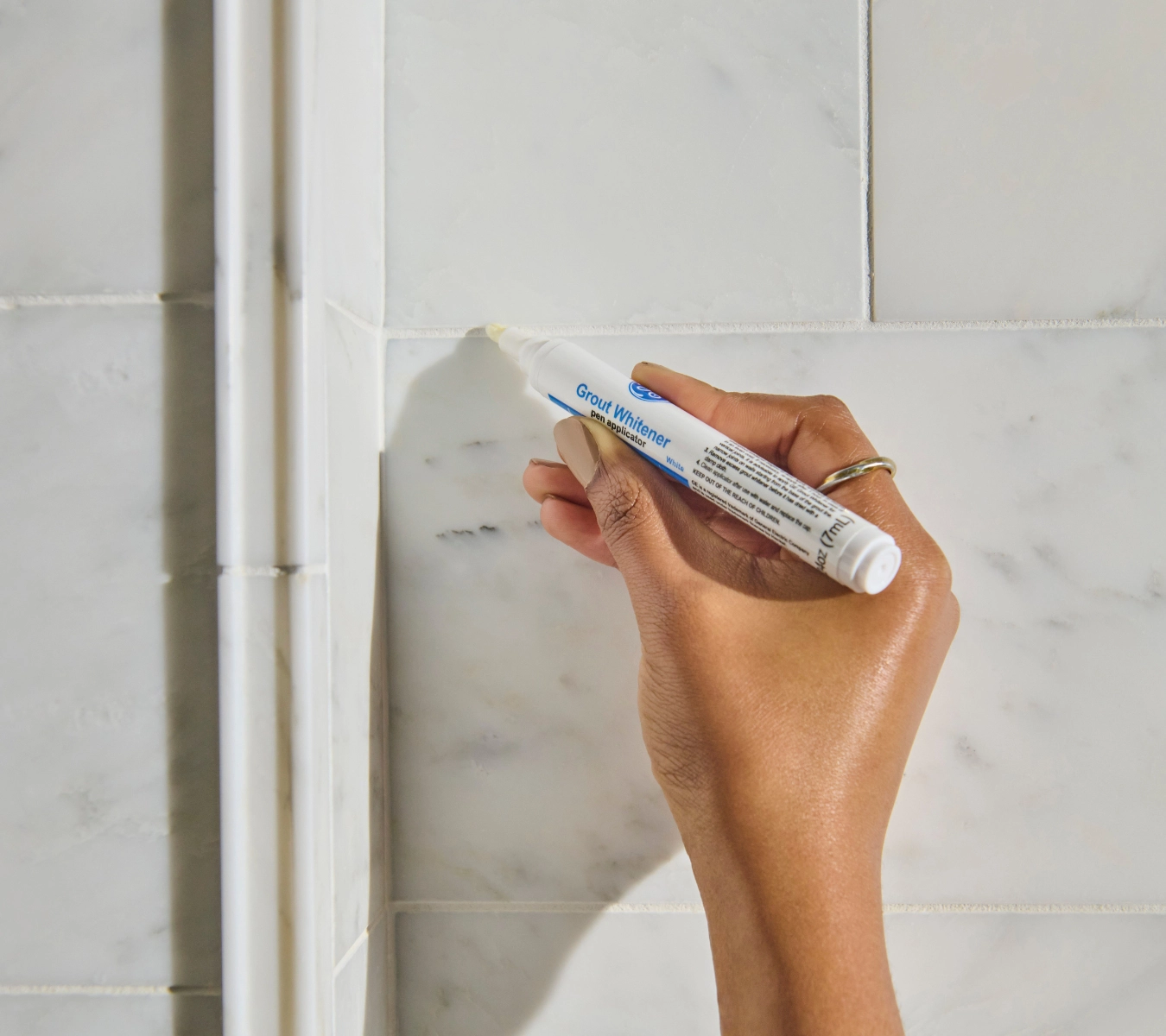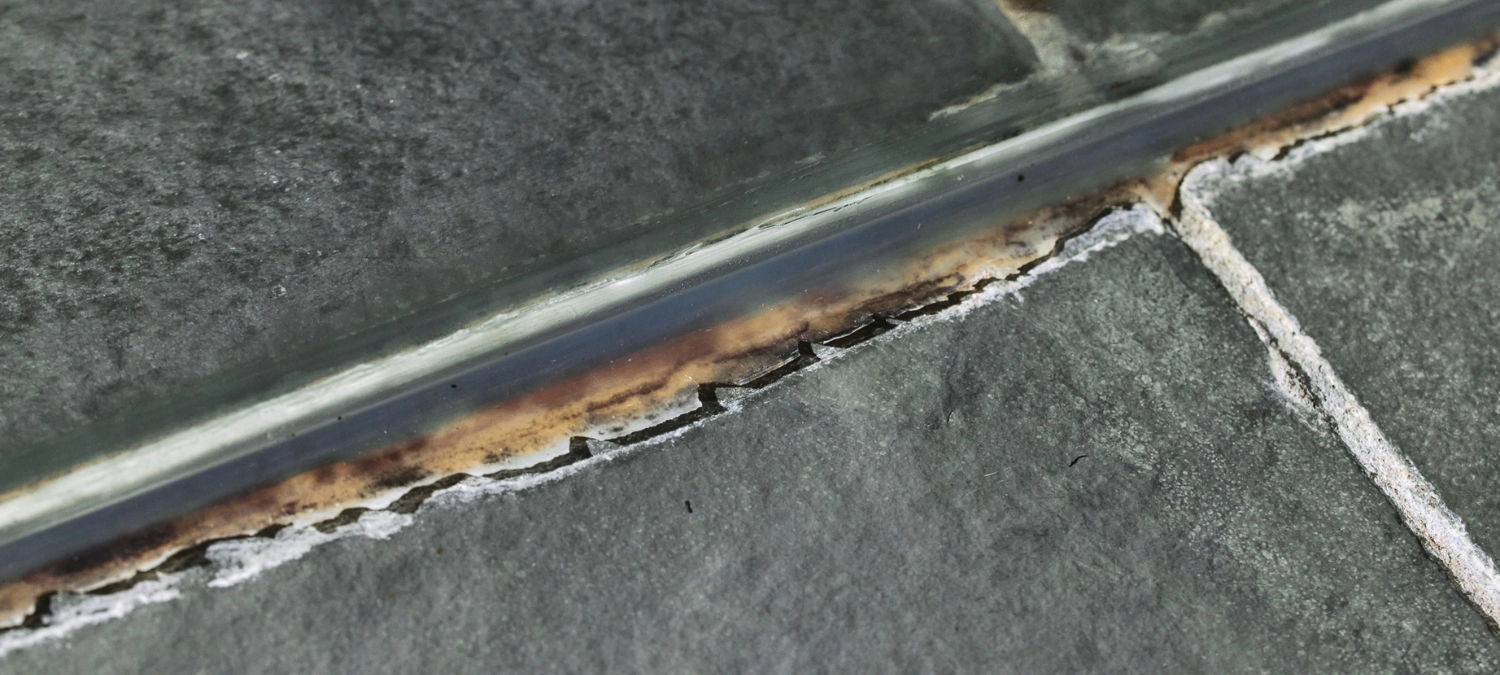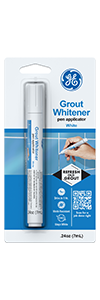This DIY article is provided as a general guide only and is not intended to take the place of product-specific installation procedures; always follow applicable manufacturers’ instructions. Depending on your home’s age and condition, location within the home, and other potential factors, repairs and/or upgrades or other services may be necessary prior to the beginning and/or completion of your project that may involve the services of a home improvement professional. This article does not include advice pertaining to local building codes and/or any related inspections.
Bathrooms are one of the most common places for mold to develop, thanks to constant humidity and frequent water exposure. Without proper sealing and maintenance, moisture can seep into tile seams, grout lines, and behind fixtures, creating ideal conditions for mold growth. This guide highlights the best GE sealants and practical tips to help you protect your bathroom surfaces and keep mold at bay.
Why bathrooms are prone to mold
Mold thrives in damp, poorly ventilated environments, making bathrooms a natural hotspot for growth. Daily activities like showering, bathing, and handwashing generate constant moisture, which often lingers on surfaces, in corners, and in the air. Without proper waterproofing, water can seep into grout lines, behind tile, and around fixtures, creating hidden pockets of dampness where mold spores flourish.
High humidity levels, combined with limited airflow, make it difficult for bathrooms to dry out fully between uses. This persistent moisture provides the perfect conditions for mold and mildew, especially in areas like shower walls, tub surrounds, and the seams where tile meets other materials. In addition to being unsightly, mold can degrade materials, produce unpleasant odors, and contribute to respiratory issues in sensitive individuals.
The key to mold-proofing your bathroom lies in sealing vulnerable areas with the right products and maintaining dry surfaces. With the proper approach, it’s possible to create a healthier bathroom environment that resists mold before it has a chance to grow.
Mold prevention starts with the right sealant. GE Advanced Silicone Kitchen & Bath Sealant and GE Supreme Silicone Kitchen & Bath Sealant offer waterproof, mold-resistant protection where bathrooms need it most. Combine them with routine maintenance and a grout whitening pen to keep surfaces cleaner and healthier for the long run.
Where mold grows and how to stop it
Mold often grows in the places you don’t always see—corners, seams, and joints where water tends to linger. In the bathroom, high-risk zones include shower corners, tub surrounds, backsplash edges, and under sink rims where splashing and condensation are common. Grout lines, floor transitions, and wall-to-tile seams are also frequent mold hotspots, especially when sealant is cracked or missing.

To stop mold from taking hold, focus on creating a watertight seal in these areas. You’ll need to apply one of the best bathroom sealants, such as GE Advanced Silicone Kitchen & Bath Sealant or GE Supreme Silicone Kitchen & Bath Sealant, to block water from seeping into gaps. These products offer mold resistance and long-term flexibility, even in high-humidity environments.
In addition to sealing, improve air circulation by using exhaust fans or opening windows after showers. Wipe down wet surfaces with a towel or squeegee to reduce standing moisture. By targeting mold-prone zones with the right sealant and daily moisture control, you can keep your bathroom cleaner, drier, and healthier.
Best GE bathroom sealants for mold resistance
GE offers two professional-grade silicone sealants specifically formulated to resist mold and protect against water damage.
GE Advanced Silicone Kitchen & Bath Sealant is a top choice for sealing high-moisture areas. This 100% silicone product is permanently waterproof and offers mold resistance for up to 10 years. It adheres strongly to common bathroom surfaces like tile, glass, metal, and porcelain, and it’s water-ready in just 30 minutes—ideal for fast-paced work or quick repairs. Use it around sinks, backsplashes, tub edges, and shower corners to create a durable, mold-resistant barrier.
For areas that see frequent movement or temperature fluctuations, GE Supreme Silicone Kitchen & Bath Sealant provides Class 50 flexibility and lifetime mold-free product protection. It maintains a strong seal even as materials shift, making it ideal for wall seams, floor transitions, and heavy-use zones. Both products are available in clear and white finishes to match your space. When used correctly, these GE silicone sealants help stop mold before it starts.
Wondering when to use caulk vs sealant? Learn the differences.
Refresh and protect grout with a grout whitening pen

Even with well-sealed edges, discolored grout can make your bathroom feel less clean and may indicate mold buildup. Over time, grout absorbs moisture, soap residue, and dirt, creating the perfect environment for mold to thrive. Rather than replacing grout entirely, a grout whitening pen offers a fast, affordable way to restore the look of tile joints and discourage mold regrowth.
Start by cleaning the grout lines with a non-abrasive cleaner or a vinegar-water solution, then let them dry completely. Shake the pen, apply it evenly along the grout lines, and wipe away any excess before it dries on the tile surface. The result is a cleaner, brighter appearance with improved surface hygiene.
Pairing this step with fresh GE Advanced Silicone or GE Supreme Silicone sealant around corners and seams gives your bathroom a complete refresh—both functionally and visually.
Learn more about removing shower mold.
Daily and seasonal bathroom mold prevention tips
Consistent maintenance is key to keeping mold out of your bathroom. Start with daily habits: run the exhaust fan during and after showers to reduce humidity, and wipe down wet surfaces—like shower walls, tub rims, and tile—with a squeegee or towel to prevent standing moisture. Keeping surfaces dry helps slow mold growth before it can start.
On a seasonal basis, inspect sealed joints around tubs, sinks, and backsplashes for signs of wear, such as peeling, cracking, or mold stains. If needed, remove the old sealant and reapply a mold-resistant sealant. Use non-abrasive cleaners regularly to protect both grout and sealant from breakdown. With just a few small changes to your daily and seasonal routine, you can keep your bathroom resistant to mold.
To get GE Sealants’ products for your home improvement project, visit these fine retailers in the U.S. or Canada.



